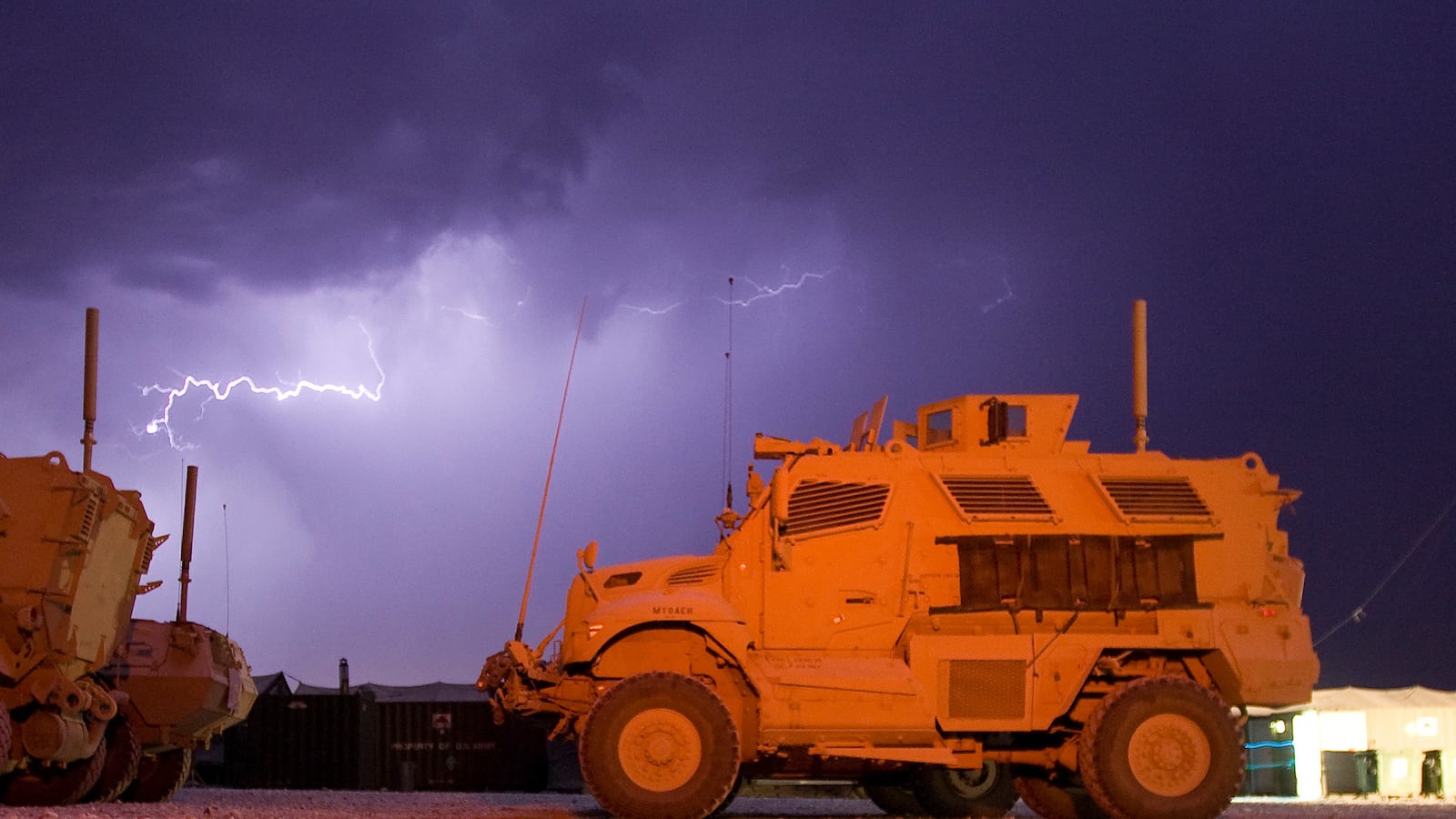In an attempt to counter widespread concern over “militarized” local police departments, law enforcement groups are pressing Capitol Hill to not cut off the supply of armored vehicles, body armor and other military equipment to the nation’s cops.
This week, the National Tactical Officers Association, the lobbying group for 1,600 SWAT teams across the country, emailed all legislative staffers in the House and Senate to express that they shared in “our nation’s grief” over the events in Ferguson, Missouri.
But their ultimate message was unmistakable: Don’t take away our gear.
“The police have to be one step ahead of the criminal element, have to be prepared for the worst-case scenario. You don’t want a community to be taken over by one or many criminals,” NTOA Executive Director Mark Lomax explained to The Daily Beast. “We’re definitely for equipping our law enforcement officials out there properly, with proper training and proper policies.”
So far, most of the conversation in Washington, D.C., has tended in the other direction, and a number of lawmakers say they want to curtail or eliminate the transfer of military equipment to civilian law enforcement.
Republican Sen. Rand Paul’s office is considering introducing a bill that would prohibit all transfers of weapons from the military to law enforcement officials, establishing a kind of church-state boundary that couldn’t be crossed. Elsewhere in the Capitol, the idea of having House Republicans defund the Pentagon’s weapons transfer program is also being mulled over.
Democrats have also expressed concern over the issue. Rep. Hank Johnson is rallying his colleagues behind a bill that would reform the Pentagon’s 1033 program, which facilitates the transfer of equipment to law enforcement, while Sen. Carl Levin said that the Senate Armed Services Committee would reassess it the program.
“Congress established this program out of real concern that local law enforcement agencies were literally outgunned by drug criminals,” Levin said in a statement. “We will review this program to determine if equipment provided by the Defense Department is being used as intended.”
One broad criticism emerging from the unrest in Ferguson, including from the National Black Police Association, concerns the deployment of tank-like Mine Resistant Ambush Protected (MRAP) vehicles by local police.
“There [is] no need to roll in urban warfare equipment anticipating and wanting a battle with citizens who only demand answers,” said Malik Aziz, national chair of the NBPA. “In many cities the acquisition of these MRAPs and other tools are almost useless… Most of these MRAPs are too big and bulky and not designed for urban environments.”
The MRAPs have garnered nationwide attention due to their imposing size, with some critics arguing that they set a confrontational tone and invite violence. But other law enforcement groups rallied to justify the usefulness of MRAPs.
“The presence of an MRAP for defensive positioning should not unnerve a law-abiding citizen,” responded Jon Adler, the national president of the Federal Law Enforcement Officers Association. “Police officers are human and bleed like everyone else. They deserve the best protection from violent assaults, and providing them with MRAPs or advanced body armor minimizes their exposure to serious injury or death.”
Mike Willis, executive director of the United States Deputy Sheriff’s Association, ticked off possible uses for MRAPs: protection in an active shooter situation, transportation in extreme flooding, defense against Molotov cocktails during a riot, and rescue scenarios.
Law enforcement groups worry that, with all the talk of law enforcement “militarization,” a congressional response may overcompensate, depriving them not only of armored vehicles but other vital equipment offered through the 1033 program like rescue boats, generators, body armor and ATVs.
“The appropriate compromise is, let’s talk about training, which is not part of the original 1033 program,” Lomax said. “[Let’s not] throw the baby out with the bathwater… We believe that the 1033 program has done a lot for law enforcement over the last 20 years, and that it should continue, with reservations.”






